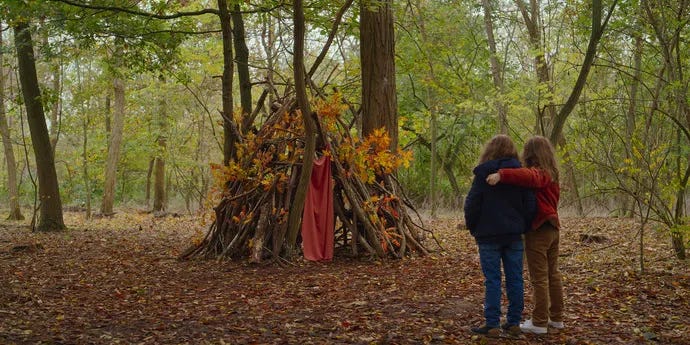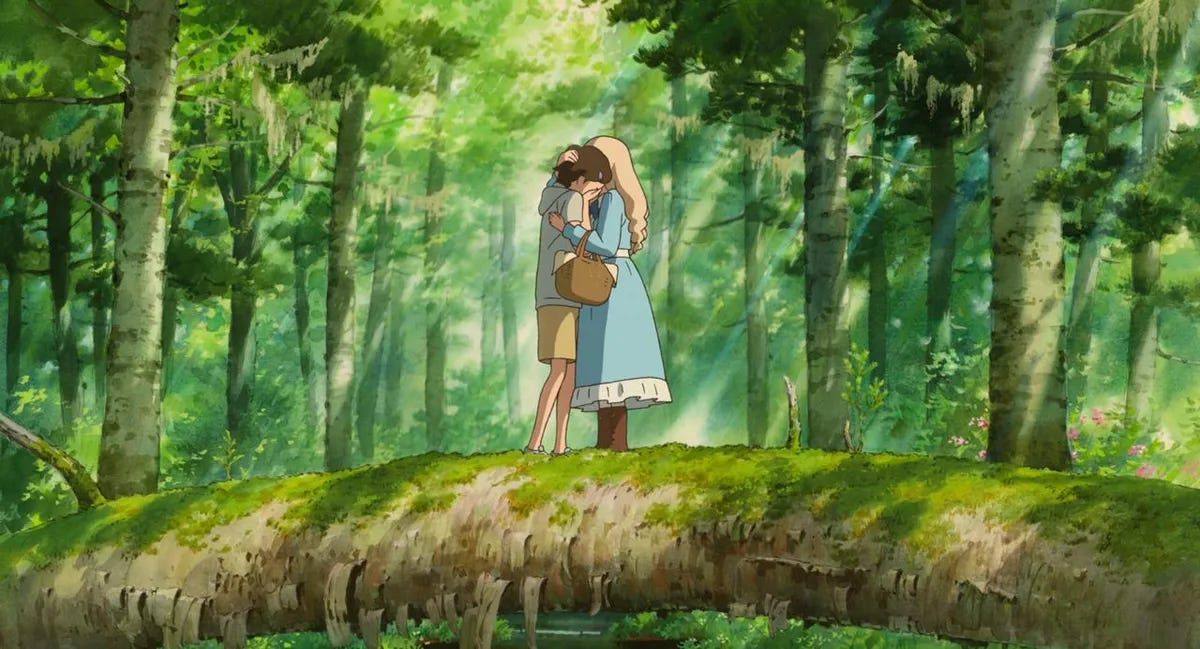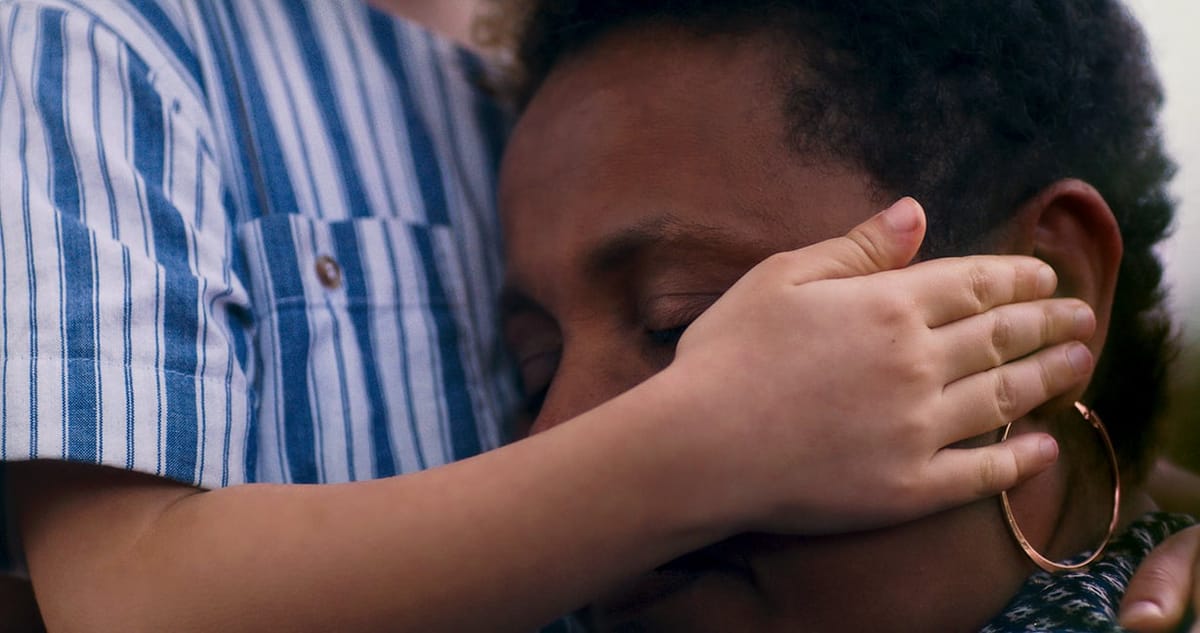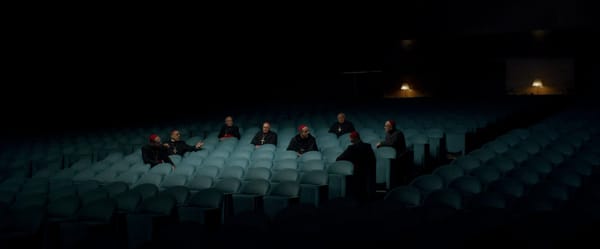How do we bear our histories?
Meeting the past in Petite Maman (2021)

What does it feel like to see your past right in front of you?
Does it haunt you in a way that your first impulse is to outrun it? Or maybe it’s a sense of longing. A desire to cling to whatever — or whoever — gives life a bit more certainty.
Writer and director Céline Sciamma lets the past meet the present in her fanciful 2021 film Petite Maman. When Nelly loses her grandmother, she gets the chance to explore her mother’s childhood home where she befriends Marion, a girl her age building a treehouse in the woods.
As their friendship grows over the course of the movie, strangeness starts to creep in. Why is Marion a near-spitting image of Nelly? And why does her house appear to mirror that of Nelly’s grandmother? All these things eventually lead to Marion asking Nelly if she comes from the future.
Nelly’s answer is simple yet momentous: “I come from the path behind you”.

I don’t want to give away too much of the story. It’s one of those where the joy lies in its mystery and playfulness. But it made me think about our very human obsession with time and our concern with its relentless passing.
Petite Maman isn’t the first movie to ponder the connection between the past and present. In fact, it joins a host of films from across the world that reveals the complexity of what is, in some sense, a humanmade creation. We have Cinema Paradiso from 1988, Arrival from 2016, and the 2019 Dolor y Gloria. But the most important movie to note, in my opinion, is the 2014 Studio Ghibli film When Marnie Was There.
In an interview for Girls on Tops, Sciamma describes her love for Studio Ghibli and its co-founder Hayao Miyazaki. Sciamma said that, while working on Petite Maman, she kept Miyazaki as a “compass” whenever she had trouble with certain directorial decisions. Even though When Marnie Was There is not a Miyazaki feature, it is undoubtedly a Studio Ghibli creation that, like Petite Maman, takes its audience on the whimsical journey of a young protagonist who finds herself caught between then and now.
What I find most intriguing about these stories is how they use film’s unique ability to blur the line between different time periods. It’s easy to suspend the “rules” of time in a medium that can hold an entire lifetime in ninety minutes or turn a fleeting moment into a tremendous event. In Sciamma’s Petite Maman universe, a path in the woods is what separates the past from the present. In When Marnie Was There, it’s a salt marsh when the tide is low.
Yet, no matter how magical these situations seem on the surface, they might have something to say about the real nature of time too.

In both Petite Maman and When Marnie Was There, the young protagonists don’t time travel in the sense of jumping back into the past. Instead, history comes to meet them where they are in the form of humans, nature, and even a strip of old wallpaper behind the kitchen furniture. But there comes a point in the films when we and the characters realise that these encounters are not meant to last forever.
Goodbyes are always in sight. And when these goodbyes inevitably come around, it’s never a clean break but rather a willingness to not hold on so tightly anymore. To let go without completely letting go.
These movies show us that, whether we like it or not, we carry through life not only our own histories but also those of our mothers, and their mothers, and theirs. The past is always where we are. So will we try to bear it all on our shoulders or learn to walk alongside it?
If you’ve found value, joy, or comfort in The Kulturalist, consider clicking the button below to support my work. Your generosity keeps the words flowing. Thank you for being here!
If you enjoyed reading this, you might like this one about facing a final goodbye:







